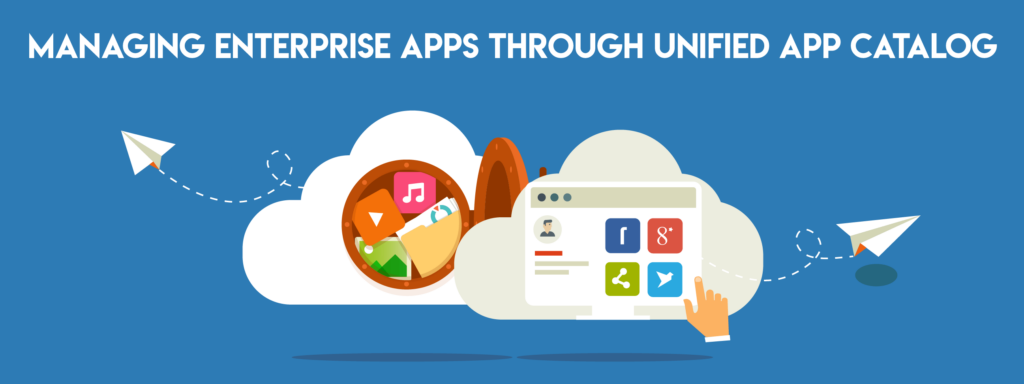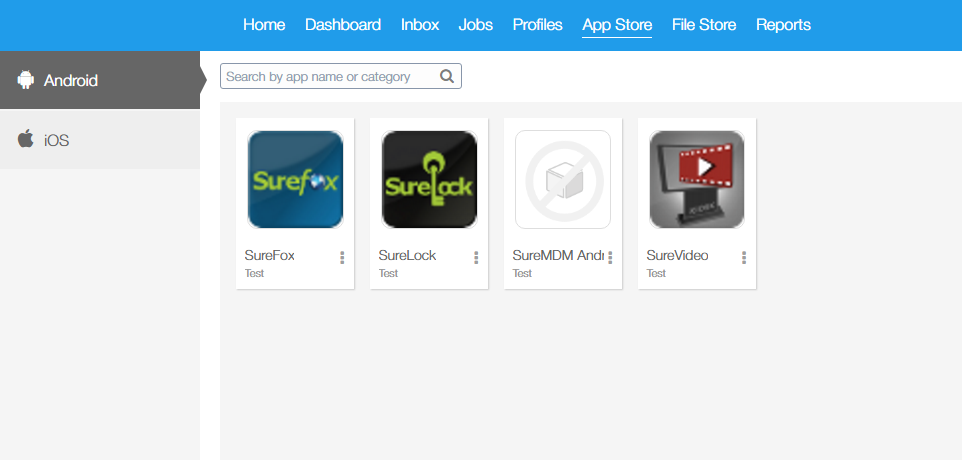
Enterprises relying on applications is increasing day by day as almost every aspect of the business is being supported and driven by applications. Streamlining business processes using CRM apps, establishing closed and efficient communication systems between employees and customers using email and chat apps, enhancing mobility and productivity using office apps, are few examples of using applications for enterprise purposes.
Managing applications in a corporate ecosystem can be a big challenge due to various kinds of device models, platforms, application types, and OS versions. Seamless apps distribution, security, and management are the key concerns that every business has to address.
Furthermore, OS-specific compliance challenges like app support, initial setup, uploading, and pushing apps to end-user internally, and tracking apps will continue to exist while managing apps.
Unification is the key to bring consistency in work, enhance worker productivity, and save dollars for business.
App Catalog vs. Unified App Catalog
Traditionally IT departments were equipped with a set of tools for the distribution and management of apps on desktops and laptops. But in the last few years, they have started relying on Enterprise Mobility Management (EMM) solutions to deliver enterprise apps to mobile users. These solutions list/categorize/display whitelisted and recommended apps for employees and enable the easy download of apps to Android and iOS devices.
Now that more smart devices, IoT, and wearables have started making their way into the enterprise ecosystem, businesses are required to use new consoles to manage these devices. Juggling between multiple systems can be cumbersome, error-prone, inefficient, and expensive. This has led to the emergence of Unified Endpoint Management (UEM), which unifies all platforms, devices, and apps, enabling users to access all enterprise apps through ‘Unified App Catalog’; regardless of whether they use laptops, desktops, mobile phones, IoT devices or wearables.
Previously, users required separate credentials every time they downloaded or accessed new apps. Unified app catalog offers single sign-on for users to access all apps available in the app store for enterprises. Research indicates, the lesser the number of login credentials required to be maintained, the lesser the chances of their getting compromised. Single Sign-on also boosts employee productivity, by avoiding the hassle of remembering multiple login credentials.
Also, Unified App Catalog runs through policy-driven password security and multi-factor authentication to ensure only authorized access to sensitive data.
Businesses should start relying on UEM solutions to manage mobility strategies. 42Gears EMM suite offers Unified Endpoint Management. The Enterprise App store provides a unified console for administrators to manage and distribute applications on a multitude of platforms ranging from laptops, desktops, phones, tablets, wearables to IoT gateways.
Following are the functionalities provided by 42Gears app catalog:
1. View application installation status.
2. Check out the app description, file size, and version.
3. Install required applications on devices.
4. Push application updates to manage apps.
5. Filter apps by categories.
6. Search apps by name or category.
7. Sort apps in alphabetical order, date added, and as per installation status.

Unified Endpoint Management solution (UEM) can help streamline the business work process by removing all inconsistencies that existed in earlier enterprise mobility solutions. In addition to managing apps and data, UEM provides a way to manage mobility securely. 42Gears SureMDM Enterprise app store feature(unified app catalog) allows the employees to view all required apps at a single place with a single sign-on through any platform i.e. iOS, Android, or Windows. Additionally, the admin can manage, control, and secure all the mobility issues from a single console, helping enterprises save on support costs and also enhance productivity.
For more details on our products, click here
If you need further assistance, please submit a ticket here
